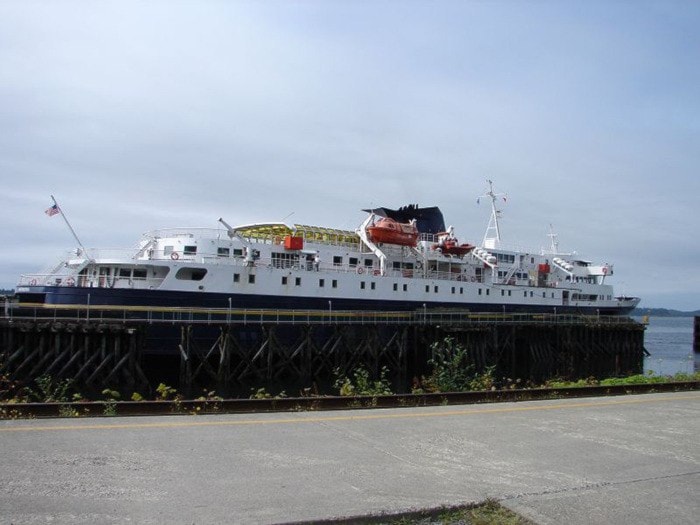The bleak budgetary outlook for the Alaska Marine Highway System (AMHS) will stand to have minimal immediate impacts for its Prince Rupert ferry terminal.
That’s the message parlayed by AMHS spokesperson Jeremy Woodrow last week when it was announced that the Alaska Marine Highway is experiencing major budget restraints.
Reports that four of the AMHS’ 11 ferries will be laid up next summer, mixed with a drop in the 2017 fiscal year’s budget of $25.5 million from its 2014 budget ($162.6 million in 2014 to $137 million in 2017) have seen some ports on the AMHS’ routes receive reduced numbers of calls come the summer of 2016.
“Last season, Prince Rupert saw ferry sailings effectively cut in half from four ports of call during the summer to two calls, and this next summer the proposal is to remain at two scheduled sailings per week,” said Woodrow.
“For the summertime, [Prince Rupert] would have a Tuesday and Saturday ferry.”
That’s welcome news for those in Prince Rupert, including Tourism Prince Rupert’s Chair Scott Farwell.
“If they’re committing to maintaining the service of two ships a week, that’s a positive sign. That’s maintaining the status quo because we don’t want to see any further reductions. Recently the commissioner and head of the AMHS were here and they were under some significant budget pressures to reduce the expenditures on that ferry system,” said Farwell.
The news comes at a time where both AMHS and Prince Rupert-Alaskan ferry stakeholders are waiting to find out if any momentum is gained with revitalizing the Alaska Marine Highway terminal in Prince Rupert – a project that has stalled due to protectionist policies in place by the American federal government that enforces a Buy-American component for the iron and steel needed to upgrade the site.
The Canadian federal government’s action in blocking that policy last year has led to a stalemate of inaction between both sides.
The terminal is nearing the end of its lifecycle and is at risk of permanent closure if delays continue to mount.
“From what I’ve heard and what I’ve been told there hasn’t been any new developments in it, but as far as I know the State of Alaska still intended at some point in the future to replace that dock,” said Woodrow.
“I don’t think there’s been any change, however we have a new government so maybe something will rise to the agenda here soon,” added Farwell.
